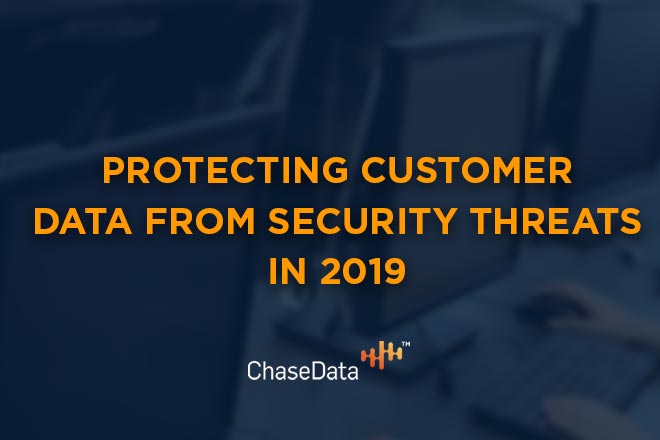Posted by on November, 1 2019 7:29 pm

Every few weeks, it seems there is another major data breach in the news. Journalists love these stories; with so many people trusting major companies with their sensitive information and having so much as stake when this information is compromised, it makes for hot news when these stories break. The average person on the street is less thrilled to hear this news, though.
Safeguarding consumer data security should be a top priority for any company in the modern day. This especially applies to those who handle the most sensitive of information regarding their clients. If this describes your contact center, you may be wondering what you can do to ensure that your company or those that you partner with won’t be part of the next big compromise of consumer data security in the news.
Something important for companies to understand before they can improve upon their approach to consumer data security is that not every piece of information is necessary. A company doesn’t have to have access to email accounts, passwords, financial and address information and more, especially if none of this is relevant to the service they provided to the user. Having too much access to information is both pointless to the business and dangerous to the business and the consumer in the event of a data breach.
Who has access to the sensitive information provided to your company by your customers - and who actually should?
These are important questions to ponder when it comes to consumer data security. Not only should administrators be extremely discerning in who they trust with information, but the consequences of doing so should be considered as well.
If someone can steal or even convince a single person with access to sensitive information to allow them to use their credentials to access it as well, all of that information is suddenly compromised. The more people who have access to information within the ranks of a company, the higher the likelihood of something like this happening. Being picky about who has access to information isn’t exclusionary - it’s a safety precaution more companies should be taking!
Guarding against unwanted access to information can be as simple as password protecting and encrypting information, but these processes have to be done correctly to be effective. Passwords should be unique, complex, and nearly impossible for anyone but the individual user to decipher. This protects even other users from access information under the guise of one another, authenticating access and ensuring that consumer data is as safe as possible.
One of the best ways to quickly pinpoint when there is a potential breach in security - before it becomes a real problem - is to keep data isolated. This way, you can immediately narrow down the list of who has access to the subset of data from which the information being accessed came. Once you have that shortlist in hand, you can work from it to determine who might be trying to undermine your security measures - and keep it from happening.
Data shouldn't just be safe while it’s in the hands of your company. It should also be safe while it’s moving between hands.
This is a common occurrence in the world of big data. So many companies and consumers are linked by the products and services that change hands and the financial information that must be shared in order for this to happen. Ensuring that data remains safe in the process is vitally important. The only way to be sure of that safety is to take the secure transfer of data just as seriously - if not more so - than the safe storage of information.
Think your company has a pretty solid data security solution? What would happen if you were hacked? Would your consumers’ information be compromised? Or would your digital walls hold strong?
Testing for vulnerabilities regularly is an important part of ensuring that your safety solutions are up to date - and up to par. Without these regular checks, you are likely to fall victim to the ever-changing barrage of digital attacks being waged by hackers. Prevent this by waging your own test attacks and adjusting accordingly.
Technology is not the only thing that has to be secured to maintain consumer privacy and safety. In many cases, there might also be physical copies of books, paperwork, and other items that contain private information. Whether it’s a financial statement, a form of formal identification, or something else, protecting these pieces of information just as well as you protecting technology in your center will provide an added layer of safety that prevents data breaches from inside as well as out.
If you need to tighten security on the non-tech items that contain sensitive information in your company’s possession, then it only stands to reason that you should increase security on those that are tech-related even further. These are the points of access that most modern data breaches happen through - and the ones that you can most easily protect, if you know how to do so.
In addition to the tips already offered on this list, it pays to invest in great software for your business. Security doesn’t have to come from an entirely separate location from where you get your usual tools and technology; it can come from the same reliable, trustworthy source you already depend on.
For everything you need to outfit your operation with the day’s best and most effective security solutions, contact the experts at ChaseData. We have everything you need to keep your consumer data security locked up and put your and your customers’ minds at ease.